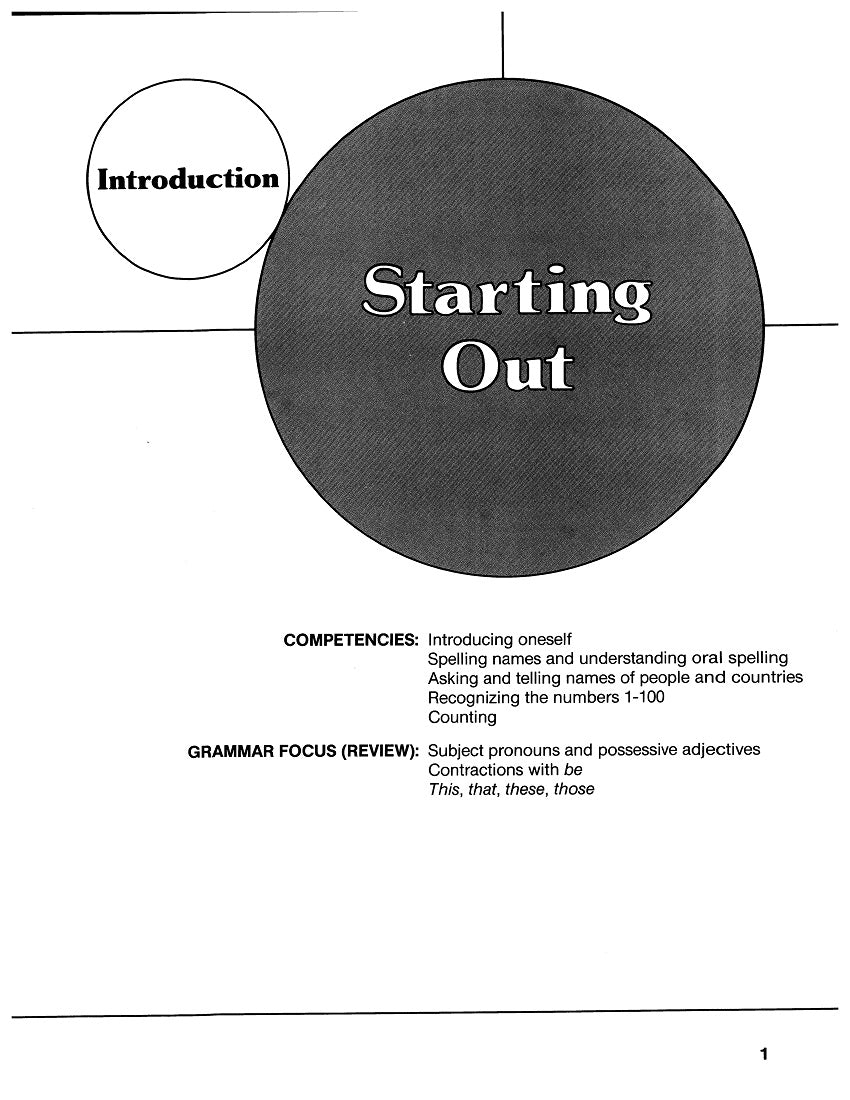Work/Life English
E-05.00 Restart Oral-Skills Training with Self-Introductions, Oral Spelling, Names of People, Countries & Numbers
E-05.00 Restart Oral-Skills Training with Self-Introductions, Oral Spelling, Names of People, Countries & Numbers
English in Everyday Life, Starting Out: Introductions by Name & Country; Numbers 1-100,
WorkLife English: Competency-Based Listening/Speaking, Book 2
4 pp
Who It’s For: American-English (Teachers & Helpers of) High Beginning Students Being Introduced (for the First or Second Time) to Oral-Language-Skills Instruction
Why It’s Useful: Even learners above Beginning Levels may be unfamiliar with the approach of focusing on specific linguistic skills like Listening & Speaking (as opposed to Reading & Writing) in a course of language study. This brief Lead-in to the ten Chapters of WorkLife English: A Competency-Based Listening/Speaking Book 2: English in Everyday Life contains a few warm-up activities to be completed aurally & orally—with only a little writing. Although there’s no mention of Oral-Skills Strategies as yet, its active Exercises may get participants to accept the goal of benefiting from structured interaction in whole-group, dyad, and “information-gap” situations.
What You’ll Do:
[1] In Exercise A, help participants to repeat the sample Self-Introduction exchange. Have them circulate around the room or area meeting one another. Use the info in the Explanation Box to clarify the difference between first and last names in various cultures, if relevant. Make sure learners can name the 26 letters of the English alphabet so that they can spell names aloud, if necessary.
[2] In Exercises B & C, everyone works together to collect and record the names of all group members—and their countries (or states) of origin, if appropriate.
[3] Exercise D gives provides opportunity to practice articulating the names of alphabet letters plus numbers from 1 to 100. In each step, someone reads aloud one letter from the horizontal rows and another from the vertical columns—as in B-N or G-T. In the Grid, listeners locate and pronounce the corresponding number (e.g., 32, 97).
[4] Exercise E is simply a template to use for creation of individual Bingo Grids / Boards. Everyone fills in Numbers (& Letters) in random order as they are called. Then they can use their unique Grids for practice in recognizing and calling out their items.
[5] By the way, detailed suggestions on what to do with the above Introduction / Starting Out sections appears on pages 2 & 3 of the WorkLife English: A Competency-Based Listening/Speaking Book 2 Instructor’s Manual.
Couldn't load pickup availability


